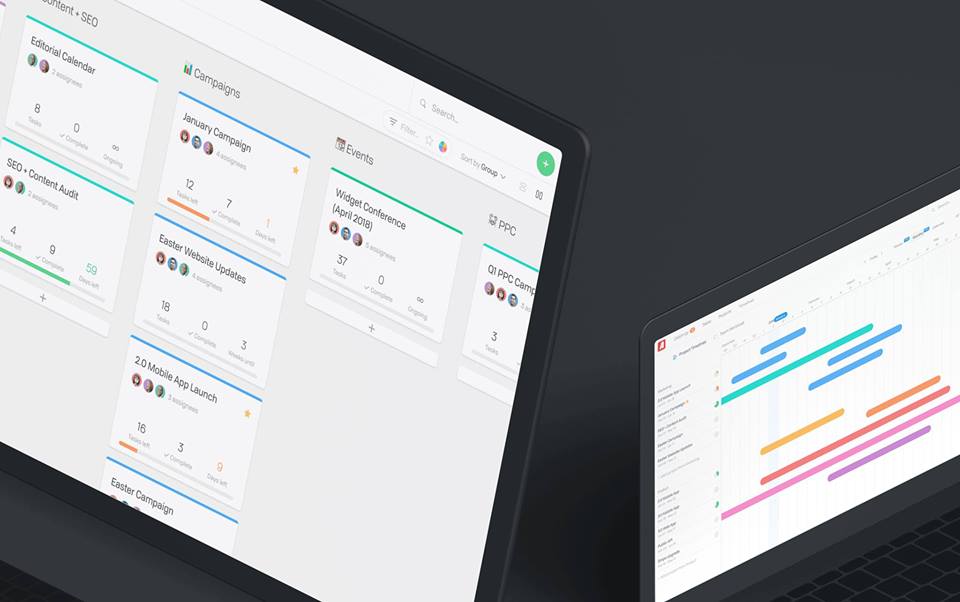
Technological advancements have led to a more mobile workforce – one no longer shackled to their desks. Now, many employees now have the liberty of working wherever a solid Wifi connection can be found. This style of work has proven to be incredibly popular with the US workforce, at times yielding improved levels of engagement with work.
According to Forbes, 80-90% of the US workforce would like to work remote at least part-time. This growing desire from employees to work remotely has encouraged companies to adopt the growing trend which has resulted in an annual list of Forbes’ top 100 companies for remote jobs.
But what does this mean for companies or departments that rely on unified communication in areas such as project management? We all know that project management can be hard to coordinate even in the most conducive of conditions, as the below cartoon demonstrates. However, companies that want to provide workers with the digital mobility that has come to be expected by employees, while ensuring clear communication, will have a challenge on their hands. Because a globally dispersed workforce is going to make communication difficult.

Taken from Marketing Week, originally from Marktoonist.
But there is good news. Flow, a flexible project and task management app for teams, today announced the release of a completely redesigned product, to help manage larger teams and more complex projects.
With a brand-new look and feel, the new Flow introduces greater flexibility and powerful new features for larger teams, including more powerful project planning abilities and new tools to manage resources and workloads.
Flow’s world-class design team has worked with companies like Apple, Slack, TED, and Starbucks, earning the product a reputation for being simple, beautiful, and easy to use.
The new Flow introduces features that give managers of any large team a birds-eye view of what is happening at every level of their organization, making it easy for them to allocate resources, balance workloads, manage their team’s tasks, and plan ahead. In particular, Flow’s flexible tools are an exceptionally good fit for marketing, creative, and design teams — helping them plan and manage campaigns, projects and initiatives efficiently.

Mark Henderson
“I don’t think it’s a big secret that project management tools are traditionally really intimidating,” said Mark Henderson, CEO of Flow. “We’re on a mission to make team collaboration simple.”
Flow’s new Projects Dashboard offers users a high-level overview of progress across all of a team’s projects, with new, custom project colors available to help organize status and workflows. More powerful team organization and filter controls give managers quick, fine-grained control over precisely which tasks, projects and workloads they can see at any time.
“We wanted to make it much, much easier for managers to take the 30,000 foot view of their team, as well as focus on what’s happening at ground-level — the tasks and workloads of groups or even individual team members — with just a few clicks,” said Jesse Herlitz, Flow’s VP of Product.
The $2.3 billion project portfolio management (PPM) market is currently growing at a rate of 11% per year. Due to this proliferation, software providers have responded with a variety of tools designed around specific workflows and project management methodologies. However, many of these PPM providers either lack the flexibility needed to allow multiple team types to collaborate effectively, or are simply overly complicated and unintuitive, hindering adoption.

Zack Onisko
In contrast, Flow has been redesigned to make every interaction quick and easy, preventing unnecessary distractions. According to Zack Onisko, CEO of fast-growing design community and Top 1,000 website Dribbble, Flow helps him stay on top of everything happening at his company:
“I’ve used dozens of project management apps in my career. None compare to Flow in the thoughtfulness of features and the quality design of the overall experience. It’s functionality is rich, while maintaining an intuitively elegant interface,” said Onisko.
As technology continues to grow along with the workforce’s appetite for mobile freedom, we will be increasingly more dependent on the innovative designs and products of companies like Flow to fill in the communications gaps left by modern technology.
You can find the link to its product hunt here.




